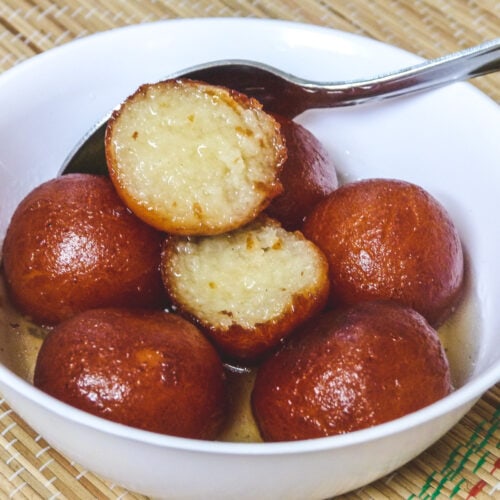Matcha, pronounced “MAH-cha,” is a finely ground powder of specially grown and processed green tea leaves. Originating in Japan, matcha has gained worldwide popularity due to its vibrant green color, unique flavor, and numerous health benefits. In this article, we will delve into the origins of matcha, explore its distinct characteristics, and provide insights into how to prepare and enjoy this delightful powdered tea.
Origins and Cultivation of Matcha: The cultivation of matcha can be traced back to ancient times in China and Japan. However, it was the Japanese who perfected the art of growing and processing matcha tea. Matcha is derived from shade-grown tea plants, typically Camellia sinensis var. sinensis, which are carefully shielded from sunlight for a few weeks before harvesting. This process enhances the tea leaves’ chlorophyll content, resulting in their vibrant green color and distinctive flavor profile.
Distinct Characteristics of Matcha: Matcha stands out from other types of tea due to its unique characteristics:
- Vibrant Green Color: The intense green hue of matcha is a result of the shade-grown process, which stimulates higher chlorophyll production. This vibrant color is visually striking and indicates the tea’s freshness and quality.
- Rich Umami Flavor: Matcha has a rich, creamy, and slightly bitter flavor with a pleasant umami undertone. This umami taste is a distinguishing feature of matcha, resulting from the amino acids, particularly L-theanine, present in the tea leaves.
- Fine Powder Consistency: Matcha is finely ground into a powder, ensuring that the entire tea leaf is consumed when preparing and drinking it. This powder consistency allows for a unique and concentrated flavor experience.
Preparing and Enjoying Matcha:
- Sift the Matcha: To ensure a smooth and clump-free cup of matcha, sift approximately 1-2 teaspoons of matcha powder into a small bowl using a fine-mesh strainer or a specialized matcha sifter.
- Add Hot Water: Heat water to around 175°F (80°C). Avoid boiling the water, as it can result in a bitter taste. Pour a small amount of hot water (about 2 ounces) into the bowl with the sifted matcha powder.
- Whisk the Mixture: Use a bamboo matcha whisk, also known as a chasen, to vigorously whisk the matcha and hot water in a quick back-and-forth motion until the powder is fully dissolved and a frothy layer forms on top.
- Adjust the Water Ratio: Once the matcha is whisked, gradually add more hot water (about 6 ounces) to achieve your desired concentration and taste. You can adjust the water amount based on personal preference.
- Enjoy the Matcha: Savor your freshly prepared matcha tea by slowly sipping it while appreciating its vibrant color, smooth texture, and unique flavor. Matcha can be enjoyed on its own or paired with traditional Japanese sweets, such as wagashi, to complement its taste.
Variations and Culinary Uses of Matcha: Beyond traditional matcha tea, this versatile powder can be used in various culinary creations, such as:
- Matcha Latte: Mix matcha powder with steamed milk or plant-based milk for a comforting and flavorful matcha latte.
- Matcha Smoothie: Blend matcha powder with your favorite fruits, yogurt, and a liquid of your choice to create a refreshing and nutritious matcha smoothie.
- Matcha Desserts: Incorporate matcha into cakes, cookies, ice cream, and other desserts for its distinct flavor and vibrant color.
Matcha Green Tea Latte Recipe:
Ingredients:
- 1 teaspoon matcha powder
- 2 teaspoons hot water (not boiling)
- 1 cup milk (dairy or plant-based)
- Sweetener of choice (such as honey, maple syrup, or sugar), optional
Instructions:
- Sift the Matcha: Sift the matcha powder into a small bowl using a fine-mesh strainer or a specialized matcha sifter. This helps break up any clumps and ensures a smooth consistency.
- Whisk the Matcha: Add the hot water to the matcha powder in the bowl. Using a bamboo matcha whisk or a small whisk, vigorously whisk the mixture in a zigzag or “W” motion until the matcha is fully dissolved and a frothy layer forms on top.
- Heat the Milk: In a small saucepan, heat the milk over medium heat until it reaches your desired temperature. Be careful not to let it boil.
- Froth the Milk (optional): For a frothy latte, you can use a handheld milk frother or a small whisk to froth the heated milk. Alternatively, you can skip this step if you prefer a smoother texture.
- Combine the Matcha and Milk: Pour the whisked matcha into a cup. Slowly add the heated milk to the cup, stirring gently to combine the matcha and milk together.
- Sweeten (optional): If desired, add a sweetener of your choice, such as honey, maple syrup, or sugar, and stir until dissolved. Adjust the amount of sweetener to your taste preferences.
- Serve and Enjoy: Your matcha green tea latte is now ready to be enjoyed! Sip it slowly and savor the unique flavor and vibrant color of the matcha.
Note: You can adjust the matcha powder and milk quantities according to your preference for a stronger or milder flavor. Feel free to experiment with different types of milk, such as almond, soy, or oat milk, to suit your dietary preferences.
Variations:
- Iced Matcha Latte: Follow the same steps but use chilled milk and pour the whisked matcha over ice cubes for a refreshing iced matcha latte.
- Matcha Smoothie: Blend matcha powder, milk, a frozen banana, and your favorite fruits for a creamy and energizing matcha smoothie.
- Matcha Frappuccino: Blend matcha powder, milk, ice cubes, and a sweetener of your choice for a frosty and indulgent matcha frappuccino.
Enjoy the rich and distinctive flavors of matcha with this simple and delicious matcha green tea latte recipe. It’s a wonderful way to incorporate the health benefits of matcha into your daily routine.





